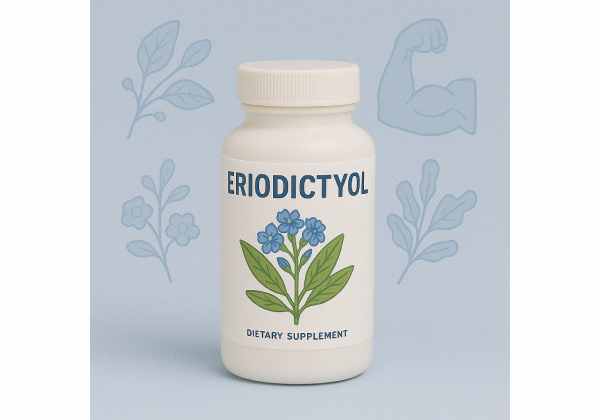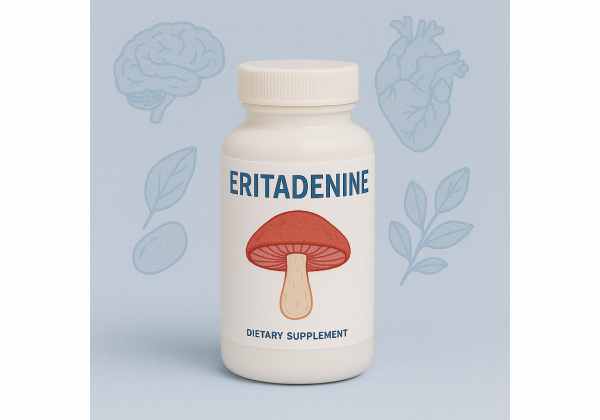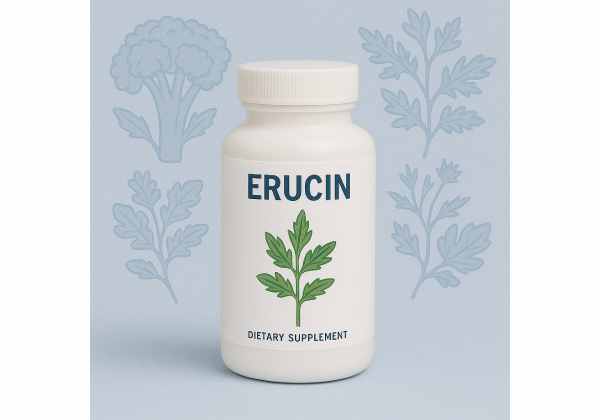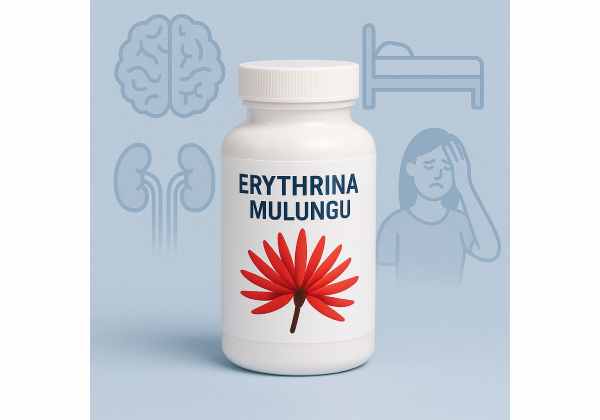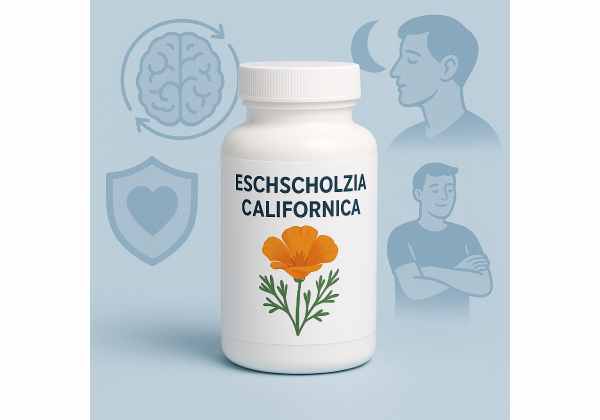Erigeron breviscapus Herb: Vascular Health, Neuroprotection, and How to Use It
Erigeron breviscapus is a daisy-family herb native to southwest China and long used in traditional formulas for brain and heart health. Modern extracts—often standardized to scutellarin, a flavonoid glucuronide—are sold as oral capsules and, in hospitals in China, given by intravenous infusion as “breviscapine” preparations. Research explores potential benefits for ischemic stroke recovery, microcirculation, and neuroprotection, with additional laboratory...
Erigeron canadensis Extract Benefits: Anti-Inflammatory, Antibacterial Properties, and More
Canadian fleabane (Erigeron canadensis, also known as Conyza canadensis) is a hardy North American herb long used in folk medicine for skin wounds, digestive upset, and as an astringent. Modern lab research has renewed interest in its extracts and essential oil for anti-inflammatory, antioxidant, and antimicrobial properties. Phytochemical analyses show a spectrum of flavonoids (such as catechin and quercetin...
Eriobotrya japonica Leaf: Natural Benefits, Dosage, and How to Use It Safely
Eriobotrya japonica—better known as loquat—is a fruiting tree whose leaves have been used for centuries in East Asian herbal traditions for coughs, throat comfort, and skin health. Modern extracts concentrate bioactive triterpene acids (notably ursolic and oleanolic acids), flavonoids, and procyanidins that show anti-inflammatory, antioxidant, and immunomodulatory actions in laboratory and early human studies. Interest has grown around potential...
Eriocitrin Explained: Health Benefits, How It Works, and Safety Tips
Eriocitrin is a lemon-derived flavanone glycoside best known for its role in supporting healthy blood sugar regulation and tempering low-grade inflammation. In human trials, standardized lemon flavonoid formulas rich in eriocitrin have improved fasting glucose and boosted the incretin hormone GLP-1—a signal that helps the body release insulin after meals. Early work also suggests benefits to the gut microbiome...
Eriodictyol from Citrus and Yerba Santa: Health Advantages and How It Works
Eriodictyol is a citrus-derived flavanone found in lemons, oranges, and the North American plant Yerba Santa. It is best known for its potent antioxidant and anti-inflammatory actions in cell and animal studies, and for an unusual extra: it can reduce bitterness in foods and some medicines. In the body, eriodictyol often arrives as eriocitrin (its 7-O-rutinoside) from lemon peel...
Eritadenine Benefits: Heart Health, Liver Support, and How It Works
Eritadenine is a naturally occurring compound in shiitake mushrooms (Lentinula edodes) that has drawn attention for its effects on cholesterol metabolism and potential cardiovascular support. As a purine derivative, it appears to influence how the liver handles phospholipids and lipoproteins, and it also interacts with enzymes involved in methylation. Early work in animals suggests eritadenine can lower circulating cholesterol,...
Erucic Acid: Uses, Health Benefits, Dosage, and Medical Warnings
Erucic acid is a very-long-chain monounsaturated fatty acid (22:1 n-9) that naturally occurs in the seeds of Brassicaceae plants—especially rapeseed and mustard. Most modern edible rapeseed oils (often sold as canola) are bred to be low in erucic acid, but the compound still appears in trace to moderate amounts across everyday foods and in some specialty oils. It has...
Erucin: Natural Detox Benefits, Cancer Support, Dosage, and Safety Explained
Erucin is a naturally occurring isothiocyanate found in arugula (Eruca sativa) and related cruciferous vegetables. In the body, it forms mainly from glucoerucin (a glucosinolate) and can interconvert with the better-known sulforaphane. Researchers are interested in erucin because it appears to trigger the body’s own antioxidant defenses (via the Nrf2 pathway), act as a slow hydrogen sulfide (H₂S) donor...
Eryngium Extract: Detox, Diuretic, Liver Health, and Herbal Uses Explained
Eryngium—best known by species such as sea holly (E. maritimum), culantro (E. foetidum), and E. caucasicum—belongs to the Apiaceae family alongside parsley and coriander. Extracts from these plants are rich in saponins, flavonoids, rosmarinic acid, and other phenolics that have been investigated for metabolic, inflammatory, and antimicrobial effects. Early human trials suggest potential benefits for type 2 diabetes and...
Eryngo Herbal Supplement: Liver Aid, Diuretic Benefits, and Safe Use Guidelines
Eryngo is the common name for several species in the Eryngium genus—striking “sea hollies” and aromatic leafy herbs used in traditional medicine and regional cuisines. Across Europe and the Americas, preparations from different Eryngium species have been used for kidney and urinary discomfort, digestive upset, cough, and metabolic complaints. Modern lab and animal studies suggest antioxidant, anti-inflammatory, and lipid-modulating...
Erythorbic Acid: Top Health Uses, Antioxidant Benefits, and How It Compares to Vitamin C
Erythorbic acid—also called isoascorbic acid and labeled as E315—is a food antioxidant used to keep color, flavor, and freshness in products like cured meats, beverages, and wine. Chemically, it is a stereoisomer of vitamin C, which means it looks similar but does not act as a vitamin in the body. In foods, erythorbic acid slows oxidation, helps stabilize pigments,...
Erythrina Mulungu: Natural Anxiety Relief, Sleep Benefits, and Safe Usage Explained
Erythrina mulungu—often called “mulungu”—is a South American tree long used in Brazilian traditional medicine as a soothing, sleep-supportive herb. Modern lab studies point to distinctive erythrinian alkaloids (such as erythravine and 11-α-hydroxyerythravine) that act on brain nicotinic acetylcholine receptors. Small human trials have explored mulungu for short-term anxiety around dental procedures, usually given as a single capsule dose about...
Erythritol: Zero-Calorie Sweetener with Benefits for Diabetes, Weight Loss, and Oral Health
Erythritol is a popular sugar substitute that delivers sweetness with virtually no calories and minimal impact on blood sugar. Naturally occurring in some fruits and fermented foods—but produced commercially by fermentation—it belongs to the polyol (sugar alcohol) family. Because the body absorbs most erythritol and excretes it unchanged in urine, it tends to cause fewer digestive issues than many...
Eschscholzia californica: Natural Sleep Aid, Benefits, Dosage & Side Effects Guide
California poppy (Eschscholzia californica) is a gentle, fast-acting herb used to ease mild mental stress and support sleep. Traditionally taken as teas or standardized extracts, it contains a family of isoquinoline alkaloids that appear to influence calming neurotransmitter systems. Today, it is available as single-ingredient products and in blends for sleep and relaxation. While evidence from modern clinical trials...
Escin: Top Health Benefits, Vein Support, Dosage, and Potential Risks
Escin (often spelled aescin) is a mixture of saponins derived from horse chestnut seed (Aesculus hippocastanum). For decades, standardized horse chestnut seed extracts containing escin have been used as “venoactive” agents to relieve symptoms of chronic venous insufficiency (CVI)—the heavy, achy, swollen-leg feeling tied to poor venous return. Modern laboratory and clinical data suggest escin helps tighten venous tone,...
Esculetin Supplement Guide: Health Benefits, Uses, Dosage, and Warnings
Esculetin (6,7-dihydroxycoumarin) is a naturally occurring phenolic compound found in the bark of ash trees (Fraxinus species), chicory, Artemisia, and other botanicals. In lab and animal models, it shows antioxidant, anti-inflammatory, and enzyme-modulating effects, and it is being explored as a lead compound for cardiometabolic, dermatologic, and oncology research. Still, there’s an important caveat: despite strong preclinical signals, there...





